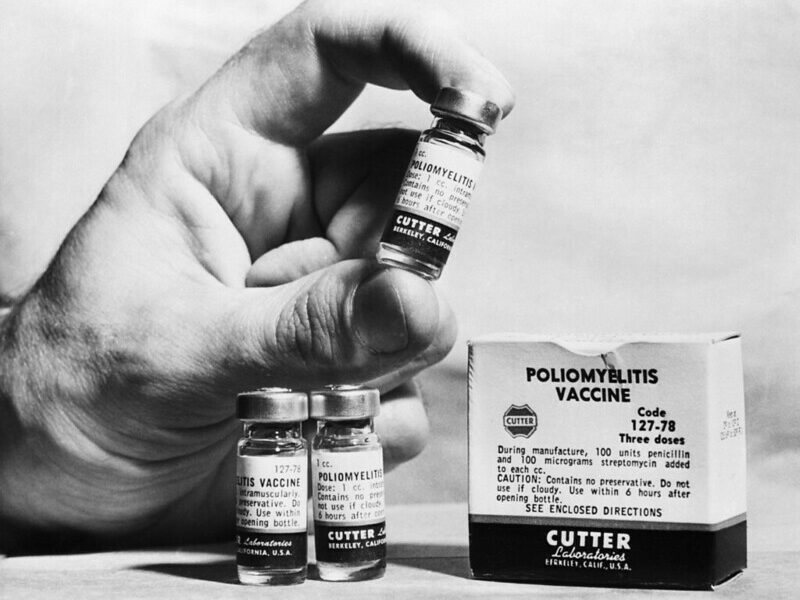Mumps are making a comeback on college campuses nationwide. On Friday, February 25, there were two lab-confirmed cases and three probable cases of mumps reported in New Hampshire [1]. All cases were members of the St. Anselm College hockey team [1]. On the 29th of February, two cases of mumps were diagnosed at Harvard University in Massachusetts. The following week on March 2, Harvard administration reported four additional cases among their student body [2]. On March 14th, the University of San Diego in California reported five mumps cases among their students [9]. Most recently, three cases were confirmed among undergraduate students at Boston University in Massachusetts on March 16th [10].
Symptoms and Spread of Mumps
After initial exposure to the mumps virus, paramyxovirus, it takes around 16-18 days for symptoms to present [1, 3]. However, symptom onset can range from around 12 to 25 days after infection [1, 3]. Not everyone infected with the virus exhibits symptoms and, if symptoms do present, they are often nonspecific. Symptomatic cases generally report: fever, headache, muscle aches, loss of appetite and tender and/or swollen salivary glands [4]. These symptoms often resolve on their own, but in rare instances can cause complications in adults [4]. Serious complications include inflammation of the brain, the tissue covering the brain and spinal cord, ovaries and breasts (in females) and testicles (in males) [4]. Another rare adult complication is deafness [4]. The hallmark of mumps is noticeable swelling of the single or both parotid salivary glands in the cheek and jaw area [3]. This swelling can be differentiated from that of swollen lymph nodes of the neck because instead of swelling in the neck, mumps causes swelling that completely covers the jaw-line and causes the ears to protrude[4]. Mumps is spread through the saliva or mucus of an infected individual, with people often becoming infected through inhalation of the saliva droplets after sneezing or coughing [4,5].
I Thought There Was a Vaccine for That?
Mumps is a vaccine-preventable disease that most of us are vaccinated against. The Centers for Disease Control and Prevention (CDC) advises that all infants be vaccinated with a combination vaccine (MMR) 12 to 15 months after birth, and with a booster at 4 to 6 years of age [6]. Nevertheless, these are just guidelines, as immunizations that are required for enrollment and attendance at a child care facility or school are established and enforced at the state level. After completion of the two-dose series, the vaccine is estimated to be approximately 88 percent effective [1]. Now, some of you may be asking, “Doesn’t vaccination mean that I’m protected?” Unfortunately, vaccination doesn’t guarantee that a sufficient immune response, and therefore protection, is triggered. In other words, just because you are vaccinated doesn’t mean that you will be fully immune from infection.
In New Hampshire, there is no law requiring vaccines prior to entering college. Each college or university is permitted to establish their own rules surrounding required immunizations prior to enrollment at a given institution [7]. On the other hand, in the state of Massachusetts there are established laws regarding immunization for college and university students. In Massachusetts, all health science and full-time students are required to have two documented doses of the MMR vaccine [8]. As shown by the differences between regulations in these two states, vaccination laws for college-age students vary on a state-by-state basis.
For additional information on the MMR vaccine and what this means for mumps in the future, please read:
http://www.healthmap.org/site/diseasedaily/article/just-vax-please-mumps-era-vaccination-5814
—
Sources
1. Tranchemon, C. (2016, February 27). Health and human services warns of college campus mumps outbreak. WCVB NewsCenter 5. Retrieved March 14, 2016, from http://www.wcvb.com/news/health-and-human-services-warns-of-college-campus-mumps-outbreak/38228470
2. Freyer, F. J. (2016, March 3). Four more Harvard students get mumps. Boston Globe. Retrieved March 14, 2016, from https://www.bostonglobe.com/metro/2016/03/02/four-more-harvard-students-get-mumps/Vei0IVkGWjv7v4TlrfsIvM/story.html
3. Center for Disease Control. Mumps: For Healthcare Providers. (2016). Retrieved March 14, 2016, from http://www.cdc.gov/mumps/hcp.html#virus
4. Center for Disease Control. Transmission of Mumps. (2015). Retrieved March 14, 2016, from http://www.cdc.gov/mumps/about/transmission.html
5. Mayo Clinic. Diseases and Conditions: Mumps. (2015, August 12). Retrieved March 14, 2016, from http://www.mayoclinic.org/diseases-conditions/mumps/basics/causes/con-20019914
6. Center for Disease Control. For Parents: Vaccines for Your Children. (2012). Retrieved March 14, 2016, from http://www.cdc.gov/vaccines/parents/record-reqs/immuniz-records-child.html
7. National Vaccine Information Center. New Hampshire State Vaccine Requirements. (2016, January 22). Retrieved March 14, 2016, from http://www.nvic.org/vaccine-laws/state-vaccine-requirements/new-hampshire.aspx
8. Massachusetts Department of Public Health. Massachusetts School Immunization Requirements for School Year 2015-2016. (n.d.). Retrieved March 14, 2016, from http://www.mass.gov/eohhs/docs/dph/cdc/immunization/guidelines-ma-school-requirements.pdf
9. University of San Diego reports five mumps cases. (2016, March 14). Outbreak News Today. Retrieved March 16, 2016, from http://outbreaknewstoday.com/university-of-san-diego-reports-five-mumps-cases-49406/
10. Brown, J. (2016, March 16). Three Mumps Cases Found at BU. BU Today. Retrieved March 16, 2016, from http://www.bu.edu/today/2016/cases-of-mumps/
